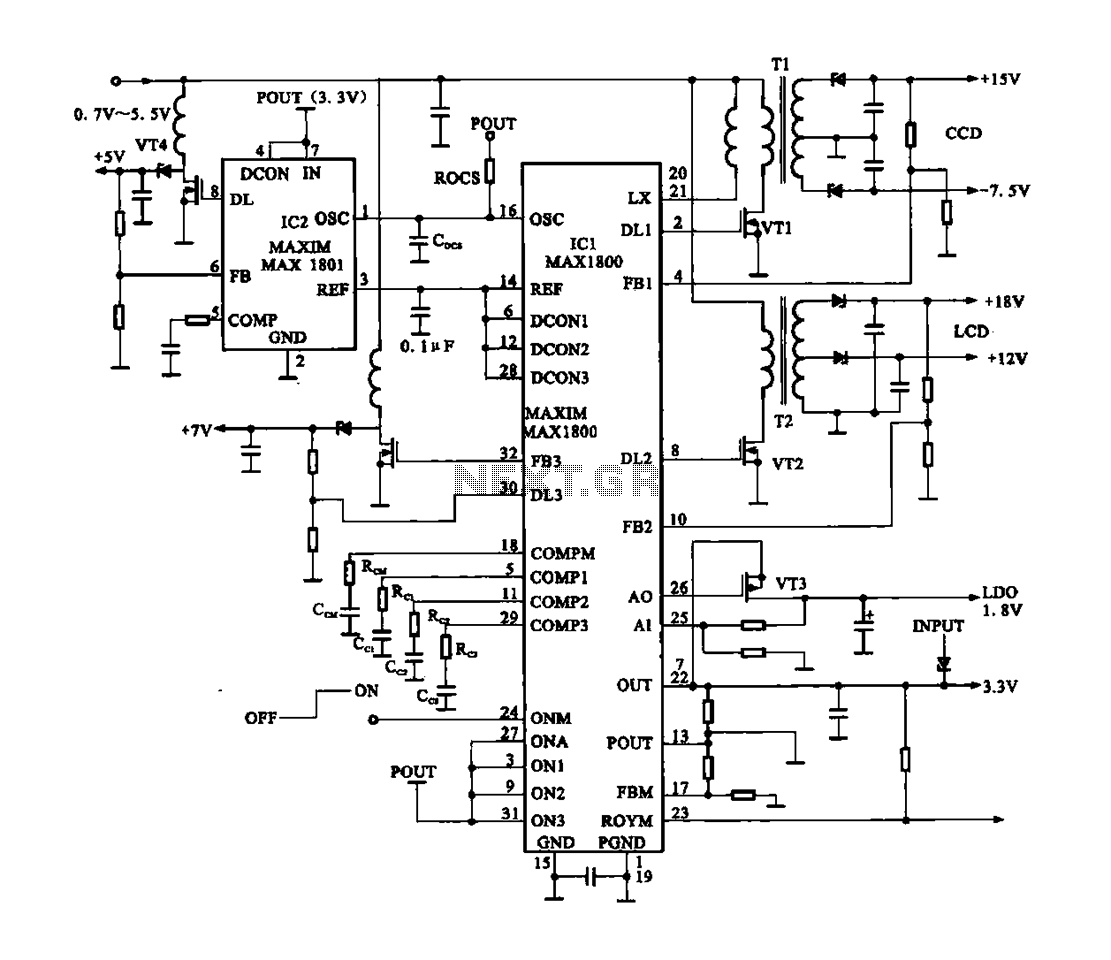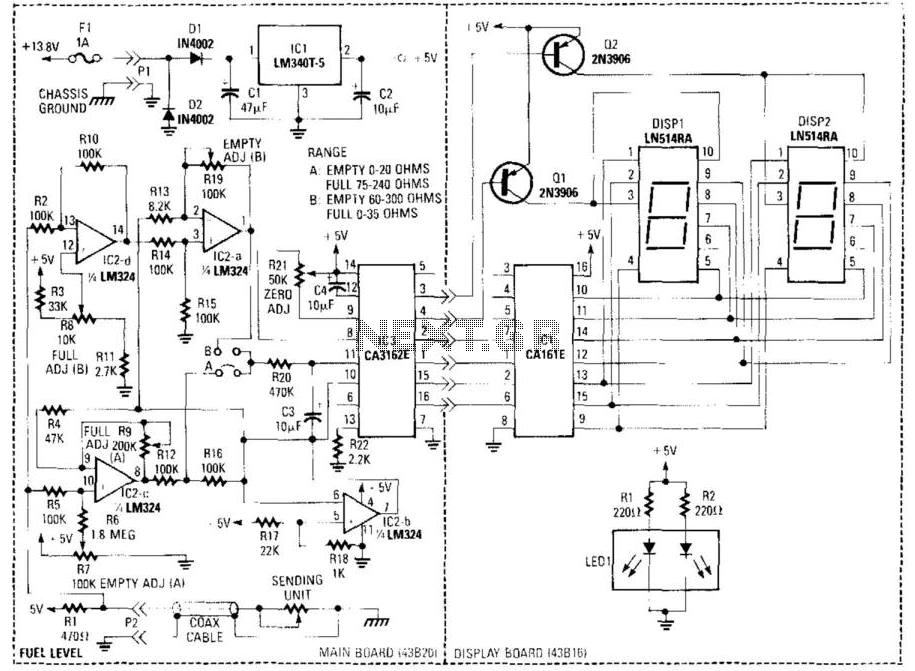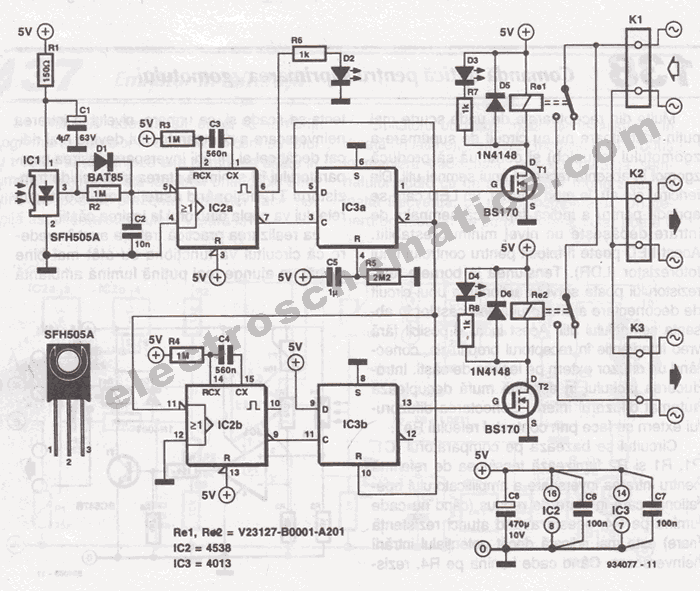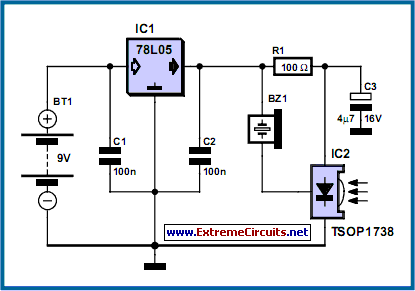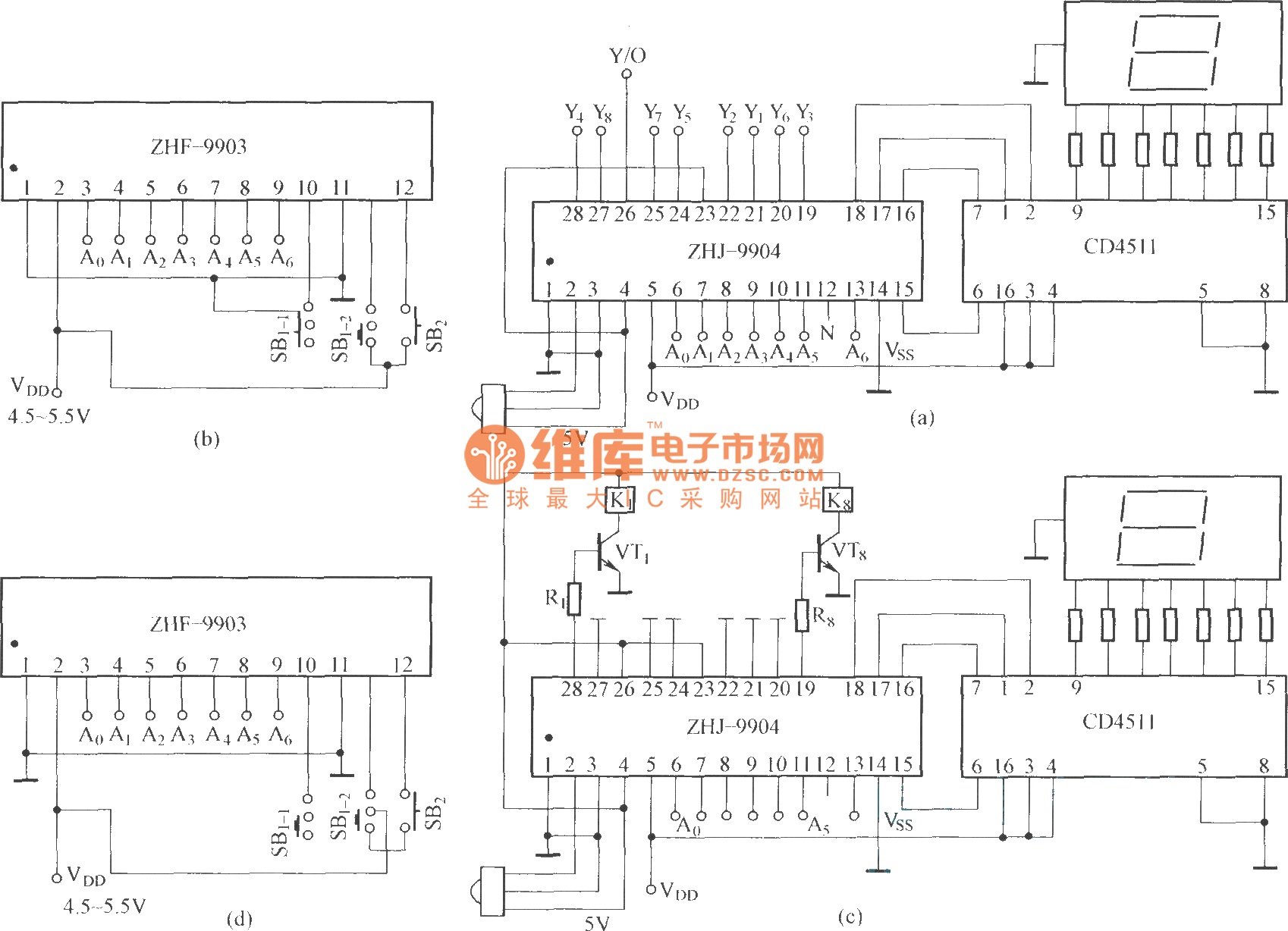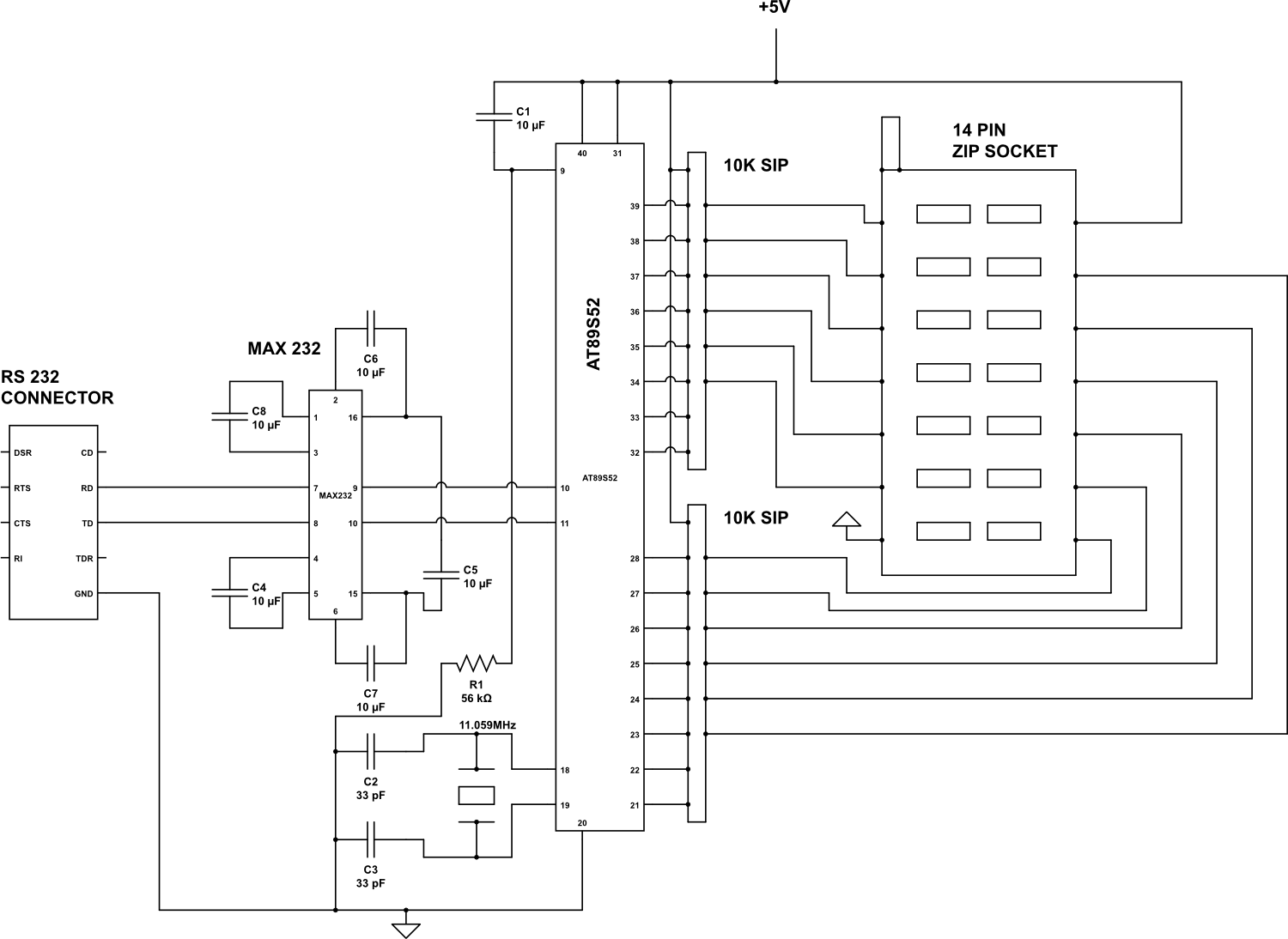
Digital Remote Thermometer

A remote sensor transmits data through the mains supply, with a temperature range of 00.0 to 99.9 °C. This circuit is designed for precise centigrade temperature measurement.
The circuit employs a remote temperature sensor that communicates its readings over the mains electricity supply. This method of data transmission utilizes power line communication (PLC), which allows for the simultaneous transmission of sensor data and AC power. The temperature sensor is likely to be a thermistor or a digital temperature sensor, capable of providing accurate readings within the specified range of 00.0 to 99.9 °C.
The design of the circuit includes a power supply section that ensures proper voltage levels for both the sensor and the communication interface. The sensor's output is conditioned to be compatible with the PLC system, which may involve signal modulation techniques to encode the temperature data effectively onto the AC waveform.
To enhance precision, the circuit may incorporate an analog-to-digital converter (ADC) that digitizes the sensor output, allowing for more accurate readings and easier integration with digital communication protocols. Filtering components would be included to minimize noise and interference from the mains supply, ensuring that the transmitted data remains reliable.
The circuit should also feature protective elements such as fuses or circuit breakers to safeguard against overcurrent situations, as well as isolation components to prevent high-voltage spikes from affecting the sensor circuitry. Overall, this remote sensor circuit is designed to provide accurate temperature monitoring while leveraging existing infrastructure for data transmission.Remote sensor sends data via mains supply, Temperature range: 00.0 to 99.9 °C This circuit is intended for precision centigrade temperature measurement, w.. 🔗 External reference
The circuit employs a remote temperature sensor that communicates its readings over the mains electricity supply. This method of data transmission utilizes power line communication (PLC), which allows for the simultaneous transmission of sensor data and AC power. The temperature sensor is likely to be a thermistor or a digital temperature sensor, capable of providing accurate readings within the specified range of 00.0 to 99.9 °C.
The design of the circuit includes a power supply section that ensures proper voltage levels for both the sensor and the communication interface. The sensor's output is conditioned to be compatible with the PLC system, which may involve signal modulation techniques to encode the temperature data effectively onto the AC waveform.
To enhance precision, the circuit may incorporate an analog-to-digital converter (ADC) that digitizes the sensor output, allowing for more accurate readings and easier integration with digital communication protocols. Filtering components would be included to minimize noise and interference from the mains supply, ensuring that the transmitted data remains reliable.
The circuit should also feature protective elements such as fuses or circuit breakers to safeguard against overcurrent situations, as well as isolation components to prevent high-voltage spikes from affecting the sensor circuitry. Overall, this remote sensor circuit is designed to provide accurate temperature monitoring while leveraging existing infrastructure for data transmission.Remote sensor sends data via mains supply, Temperature range: 00.0 to 99.9 °C This circuit is intended for precision centigrade temperature measurement, w.. 🔗 External reference
Warning: include(partials/cookie-banner.php): Failed to open stream: Permission denied in /var/www/html/nextgr/view-circuit.php on line 713
Warning: include(): Failed opening 'partials/cookie-banner.php' for inclusion (include_path='.:/usr/share/php') in /var/www/html/nextgr/view-circuit.php on line 713
